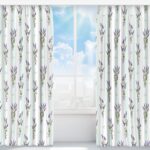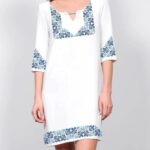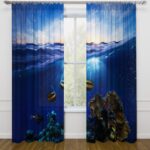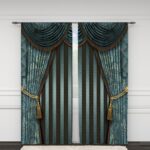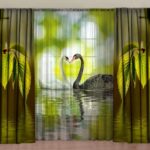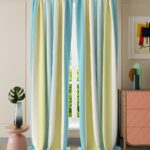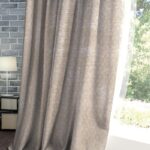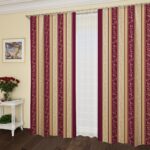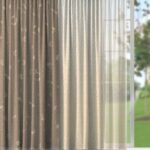Full detailed overview of gabardine fabric
When a durable and wear-resistant product is required, gabardine is usually the choice. There are many fabrics with this name, and all of them are characterized by pleasant tactile contact, softness and water resistance. This effect is achieved due to the specific weaving of the threads.

- What is gabardine
- What does it look like
- Fabric characteristic
- Pros and cons of fabric
- Varieties
- What is sewn from gabardine and where is it used
- Features of choice
- How to care for products made from this fabric
- Description of gabardine and curtains from it
- Curtains and other products from gabardine in the photo
What is gabardine
Gabardine is a dense embossed fabric with high wear resistance. It has been used in outerwear since the 19th century for its durability, windproof and water repellent properties. According to its characteristics, it surpassed rubberized products, which made it indispensable in expeditions and in war. Also, the fabric is widely used in the theatrical sphere, both for decorating decorations and for sewing costumes of past eras.

What does it look like
On the seamy side, the gabardine is smooth, and on the front side it has a relief striped pattern. Such weaving provides density and water-repellent properties of the canvas, since moisture drops quickly flow down it, without having time to be absorbed. The fabric is comfortable to wear and practically does not wrinkle.

Fabric characteristic
Properties and composition
Initially, the fabric was made from wool of merino sheep. The wool of this breed is of very high quality, it is distinguished by long crimped fibers, which are converted into a slightly fluffy and thin yarn by fine-combed processing. Modern varieties of the material are made from viscose, cotton, combined and textured polyester yarns.
The raw materials from which gabardine is made are impregnated with special moisture-repellent agents.
Note! A number of modern gabardines lack waterproof impregnation. This information is reflected in the accompanying documentation and on the label.

Density and texture
The protective properties of the material are enhanced by the weaving of fibers. Usually it is referred to as twill, although in fact the weaving is combined and refers to the embossed diagonal type.
A distinctive feature of the fabric is a finely patterned rib, oriented from left to right at various angles, from 30 ° to 70 °. The angle of inclination is determined by the thickness and density of the base, as well as the amount of shift in the rapport. The most common tissues are those with a scar angle of 60 ° -70 °. With an increase in tissue rapport, the scar on the front side grows and becomes more prominent. At the same time, the seamy side is absolutely smooth. The density range of gabardine is 290-440 g / m2.

Note! The fabric, made from natural raw materials, is matte, and synthetic additives add shine to it. The more man-made fibers are included, the stronger the shine.
Pros and cons of fabric
The characteristics of the fabric vary somewhat depending on the fibers added to the composition, however, the advantages common to all gabardines are the following:
- High durability. It is provided with a special tight weaving. The product may go out of fashion, and its quality will be almost in its original condition.
- Good shape retention. The material is resistant to stretching and does not deform after washing.
- Nice tactile contact. Despite its high density, the fabric is lightweight and soft for a comfortable fit. It retains heat well without causing vaping.
- Resistant to mechanical stress and crushing. The material is highly resistant to tearing, it does not show any snags from contact with rough surfaces. Gabardine is often used to create clothing for military and travelers, as it can withstand heavy loads without damage.
- Good breathability. Typical for natural or mixed fiber gabardines.
- Opacity. Determined by the high density of the fabric. Most often this property is used when sewing curtains. Also, the fabric is not translucent, which is convenient for most of the clothes.
- Moisture resistance. It is due to the special impregnation, twisting and the way of weaving the threads.
- Ease of maintenance. Most material dirt can be removed with a simple hard bristle brush.
- The ability to drape beautifully. The material organically falls in large folds, which is widely used in theaters and cinematography.

The only drawback of the material is an inconvenience for tailors and sewing industry masters: gabardine easily crumbles on cuts. For this reason, only experienced specialists can sew a quality product from this fabric.
Varieties
The properties and composition of modern gabardines are determined by the raw materials from which they are made. The use of any kind of fabric for sewing products depends on their functional and aesthetic purpose.
Stretch
It is a thin and smooth fabric with elastic properties. The improvement in stretch is greatly influenced by the synthetic fibers used in production, usually lycra or elastane threads. In addition to them, the composition includes natural and artificial fibers - wool and viscose.
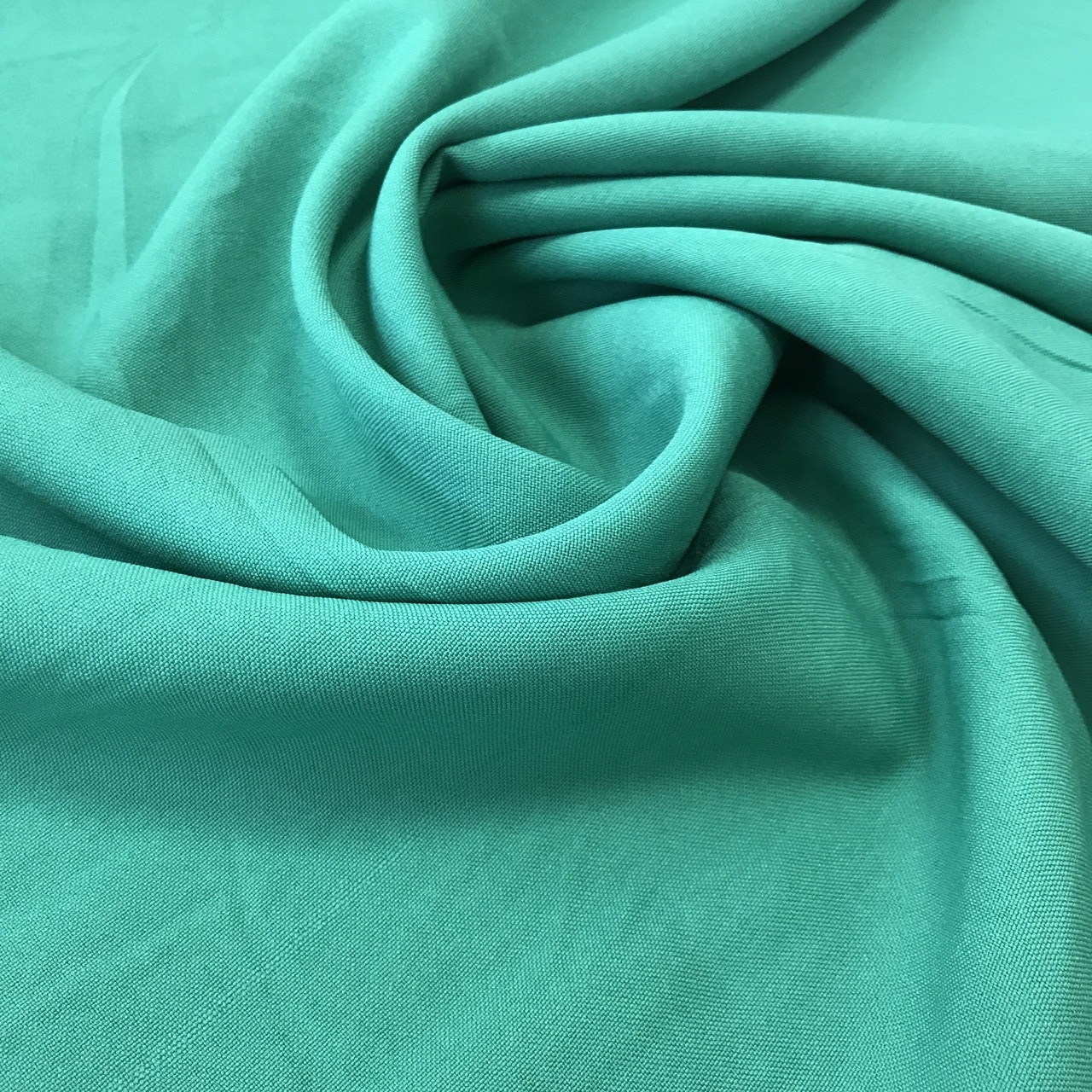
Due to the fact that the material stretches well and differs in textured smoothness, it is used if reliability and girth are required. For example, stretch is often used in hats and children's clothing.
Cotton
The use of cotton reduces the weight of the fabric, but does not make it less durable. Cotton fibers have a twisted structure, which gives the fabric high strength. Skirts, trousers, shirts, dresses and medical uniforms are made from such gabardine.

Silk
For the manufacture of such gabardine, artificial viscose silk fibers are used. They are composed of polyester and viscose, which is made from natural wood. The properties and appearance of the material are determined by the twisting of silk threads: if it is weak, then a matte surface is formed that has the effect of satin, and if it is dense, then a soft and delicate fabric with a silk luster is formed. Silk gabardine is the optimal fabric for curtains and evening dresses.
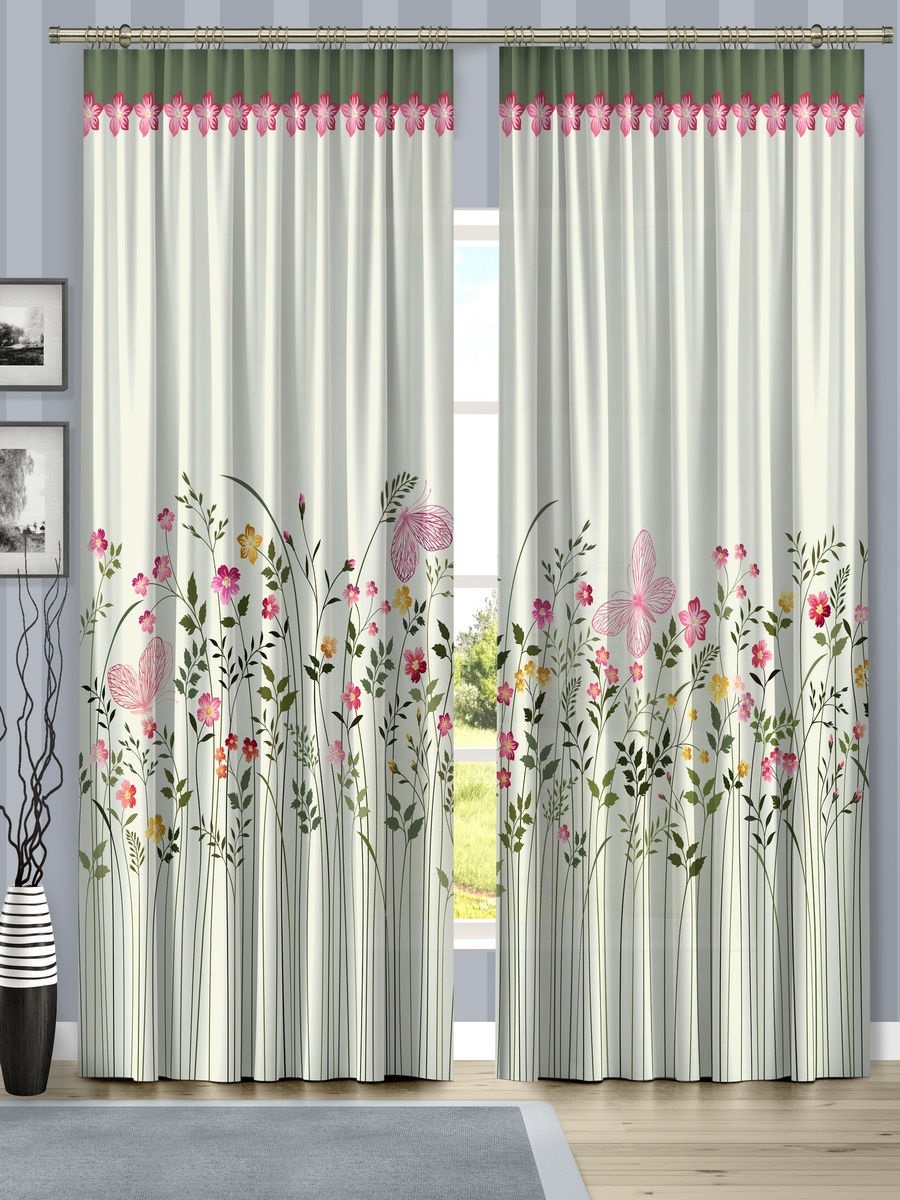
Synthetic
The basis of the fabric is polyester, which is easy to maintain and highly resistant to wear. An admixture of viscose or wool can be added to it. The material is used to produce overalls that are subject to frequent pollution and severe wear.

Staple
This fabric is made of short threads covered with water-repellent impregnation.
Note! The finished canvas has less strength compared to wool, but it looks just as aesthetically pleasing. The advantage is the reduced cost.
The material is optimal for the production of tablecloths and raincoats.

Melange
Melange is a gabardine fabric made from fibers of several colors. The most common option is using threads of different tones of the same color. With an increase in the degree of difference between the threads, the severity of the effect also increases. Melange gabardine is used to create casual dresses and suits.

Woolen
This is a premium quality gabardine made entirely of natural wool. It can vary in physical properties, have different density and density. Coarser yarns are used to make warm and dense fabrics for coats and trench coats. A softer yarn makes it possible to produce a thin and softer fiber, ideal for creating costumes and upholstery.
Note! Wool products have an extremely pleasant tactile contact, but they are very expensive.

Semi-woolen
In this case, in addition to wool, linen, polyester and viscose are also included in the fabric. Their ratio is determined by the production technology. Half-woolen gabardine is extremely common for sewing business suits.

Incombustible
This gabardine is made entirely of polyester. This fabric, when ignited, first slowly smolders, and then completely dies out. This property is used when sewing curtains and upholstery, mainly for public institutions.

Mixed
This material has a mixed composition of any fibers. It belongs to gabardines only by the way of weaving with a hem. Information on the ratio of the various threads is indicated on the labels.
What is sewn from gabardine and where is it used
The peculiarities of the use of the fabric are determined by its composition. They sew from gabardine:
- Outerwear. For this, materials made of wool and semi-wool are optimal. The resulting coats, short coats and formal suits not only increase the respectability of the image, but also protect their owner from getting wet, since the composition contains special impregnations.
- School uniform and overalls. Most often, synthetic fabrics are used.
- Evening dresses. Melange fabric is optimal for them.
- Pants, skirts and suits.
- Upholstery for upholstered furniture.
- Decorative textiles for the home. Most often these are blackout curtains, bedspreads and tablecloths.
Note! The material can have different densities, which should be taken into account when choosing curtains from gabardine.
- Banners and stage background curtains. This is due to the relief of the fabric, on which decorative details and dyes are well fixed.
- Military uniform. Also, gabardine is used for the production of uniforms for police officers, traffic police, Ministry of Emergency Situations and UIS.
Gabardine is presented in various price categories, from economy to premium. It is produced by many companies, both domestic and foreign. These include fashion houses "Armani" and "Versace", brands "Tom Ford" and "Hugo Boss". A well-known Russian manufacturer is the St. Petersburg firm Gabardini, which produces gabardine under the FUHUA trademark.
Note! Outerwear and suits are still produced by the Burberry brand, which is the founder of the fabric itself.
Features of choice
When choosing a gabardine, it is worth considering:
- Cut the product.The more complex it is, the more material will be required, since its loss during cutting increases. For example, an expensive woolen gabardine is suitable for a raincoat or jacket, and stretch or synthetics for a backpack or a complex dress.
- Fabric structure. For a medical uniform, casual dress or shirt, cotton or woolen gabardine will be appropriate, which will increase wearing comfort. For a cape or a weekend suit, semi-wool will be optimal, and for a demi-season raincoat - staple gabardine.
- Product application. The required stability of the gabardine depends on the intensity of wear. For example, a woolen or semi-woolen material will be appropriate for a festive costume, and stretch for a dress or suit strictly on the figure.
Note! Cost is an important indicator of the quality of gabardine. The less the fabric costs, the worse its quality.
How to care for products made from this fabric
Gabardine is unpretentious in care, and in order to maximize the period of operation of products from it, you should follow some rules:
- adhere to the instructions on the tag and take into account the composition of the material during washing, cleaning, ironing and storage;
- take demi-season and winter clothes made of wool to dry-cleaner, which will avoid their deformation;
- wash semi-woolen products by hand or in a delicate machine wash;
- wash light things in the "synthetic" mode, setting the temperature to 40 ° C;
- dry things flat;
- iron and steam products, turning inside out and using low temperatures.

Note! To preserve the dullness of the fabric, iron it through cheesecloth.
Gabardine is a striking and elegant fabric used in various fields. It has proven itself from the best side, providing practicality of use and comfort when worn.
Description of gabardine and curtains from it










